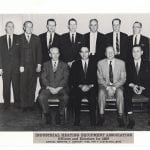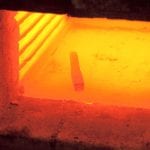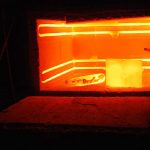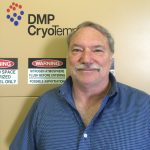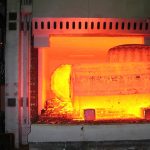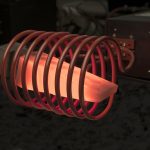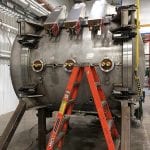Remembering where we came from
In this fast-paced world, it gets harder and harder to remember the past. It seems like the only thing that matters is this quarter....
Compatibility of polymer quenchants with metals, seals
In this column, I will discuss the compatibility of polymer quenchants and materials used in the construction of quench tanks, heat exchangers, and pump...
Heat Treating, Furnaces, and Unintended Consequences
A few decades ago, my involvement with depleted uranium (DU) began in the metallurgical R&D department, developing program logic to heat treat DU in...
Process control is vital to heat-treating
The definition of process control can only be defined by the experience of the per-son to whom the query is presented. Everyone involved in...
Q&A with Peter Caine
What is your role with HeatTek and what’s a typical week like?
My position at HeatTek is director of Custom Products. Our custom products division...
Check out IHEA webinars, online education
IHEA strives to provide a base of industry knowledge for our members and users in the industrial process heating industry. Many valuable resources can...
90-plus authors submit abstracts for European heat treat conference
So far, more than 90 authors from 22 countries have provided abstracts to the 27th IFHTSE Congress and ECHT2022. The contributions cover a wide...
An overview of heat treatment techniques
Editor’s note » This is the second in a five-part series.
In this second segment of my series on heat-treating techniques, I will discuss the...
The art of leading the heat-treat team
Leadership is about guiding the team toward the best opportunities and taking action toward getting the required task done. But success can come down...
Q&A with Bob Wells
What are some factors one should consider in cryogenic processing of gears?
First off, what is the size I need? Secondly, how do I want...
Heat treating from the operator’s perspective
Often, a customer visit involves a walk through the facility. Comments are made about how clean it is or how well organized a process...
Q&A with Keith Boeckenhauer
What is your background?
I have an engineering degree from the University of Missouri and I’ve been with Seco/Warwick since 1984, working in sales, engineering,...
Use of molten salt in heat treatment
At the turn of the 20th century, the use of molten salt as a heating and quenching medium for steels was developed in England....
Tadashi Furuhara to be given IFHTSE medal at World Congress
IFHTSE Medal will be awarded to Prof. Tadashi Furuhara of Tohoku University in Sendai, Japan.
The citation reads: “For his life-time achievement in the physical...
IHEA’s Fundamentals of Industrial Process Heating starts October 24
IHEA’s Fundamentals of Industrial Process Heating Online Learning Course has been a successful source of high-level learning for those in the industrial heat-processing industry...
A technical guide to quenching
From a quality perspective, verification of the conformance of quench requirements can be accomplished by examining a furnace chart that shows the quench trend....
Troubleshooting induction hardening problems – Part III
In previous columns, I have provided some detail on the sources of problems with induction hardening. While I have tried to be inclusive, there...
Technology is key to improving process efficiency
Efficiency. What is it, exactly?
The term “efficiency” refers to the peak level of performance that uses the least amount of input to achieve the...
Characterizing equipment using simple modeling tools
Often, the terms “digital twins” or ICME (Integrated Computer Materials Engineering) are used when talking about computer modeling of actual parts or the behavior...
Ambrell has been all about induction heating since 1986
Established in 1986, the Rochester, New York-based IHEA member manufactures a range of induction heating solutions. The company has steadily grown from a small...
Simulation tools to effectively calculate process
One common goal for a wide range of industries has been to increase power density in shaft and gear components. The steel producing industry...
Q&A with Dr. Mark Cross
The automotive industry is continually pushing new boundaries. Advancements in engineering technology show no signs of slowing down with increasing developments in manufacturing processes....
Q&A with Stephen Harris
Tell us about the new Bodycote Elgin, Illinois, facility. When did it become fully operational?
We are very pleased to announce that our brand-new Elgin...
Kanthal APMT for nuclear-energy application
The major earthquake and tsunami that occurred in Japan in 2011 did serious damage to boiling water reactors of the Fukushima-Daiichi nuclear power plant....
Understanding the Jominy end quench test
The Jominy end quench test (ASTM A255 ) is an extremely simple and useful test that is applicable to many materials besides steel...
The benefits of the Nadcap merit process
According to PRI/Nadcap Operating Procedure NOP-1111, suppliers are able to receive something called “Merit.” If your suppliers meet certain criteria, they are able to...
Q&A with Sławomir Woźniak
You recently attended ThermProcess in Dusseldorf. What kind of reactions to your products did you get from the attendees?
It was quite a good event...
Carbon potential verification
Choose from several verification methods for best fit, then develop a plan to correct for out-of-spec test results
Q&A with Ed VanNoord
Tell us about yourself and Heraeus.
I have worked for Heraeus now for almost 14 years supporting customers with the design and build of infrared...
IHEA offers 2021 Virtual Spring Safety Standards & Codes Seminar
After the success of a series of virtual seminars last fall, the Industrial Heating Equipment Association (IHEA) has scheduled a virtual Safety Standards &...
Quality Counts: Producing Endothermic Gas Efficiently
One of the critical elements in the carburizing process is the ability to create a base atmosphere suitable for the parts placed inside a...
Determining Grossman H-value from cooling curve data
In the last article, I described how the Jominy end quench test could be used to predict hardness for a series of different round...
The journey toward decarbonization
Decarbonization. Sustainability. Carbon neutral. These are definitely the latest buzz words flying around the industrial heating industry, and everywhere else for that matter. The...
IHEA welcomes a new member: RoMan Manufacturing, Inc.
By Jim Gibson | Director of Global Sales & Marketing
717-395-3066 | jgibson@romanmfg.com
RoMan Manufacturing was founded in 1980 with a singular corporate commitment to manufacture...
IHEA educates the industry in person, online
Looking ahead … Register now!
Fundamentals of Industrial Process Heating
Winter Online Course
January 25–March 7, 2021
IHEA’s Fundamentals of Industrial Process Heating Online Learning Course has been...
Method means comparing checklists vs. procedure
Whether commercial heat-treating or captive, procedures are essential to the production of conforming product and its repeatability. Procedures can be challenging to write at...
True Carbon Potential
The relationship between a carbon-rich atmosphere and its effects on low-carbon steel are well known. The evolution of carburizing led to in-situ monitoring of...
Stocky, Fechte-Heinen elected to IFHTSE Executive Council
Christophe Stocky recently was elected to be a member of the IFHTSE Executive Council in Yokohama at the recent IFHTSE Congress. He is a...
Deadline approaching for ECHT2022 conference abstract submissions
Abstract submission deadline is January 31, 2022, for the 27th IFHTSE Congress in Salzburg, Austria, September 5-8, 2022, at the Wyndham Grand Salzburg Conference...
Learning from failure in bending stress
A couple of years ago, as I was finishing my graduate studies, I was lucky enough to participate in the Strong Bar competition put on...










